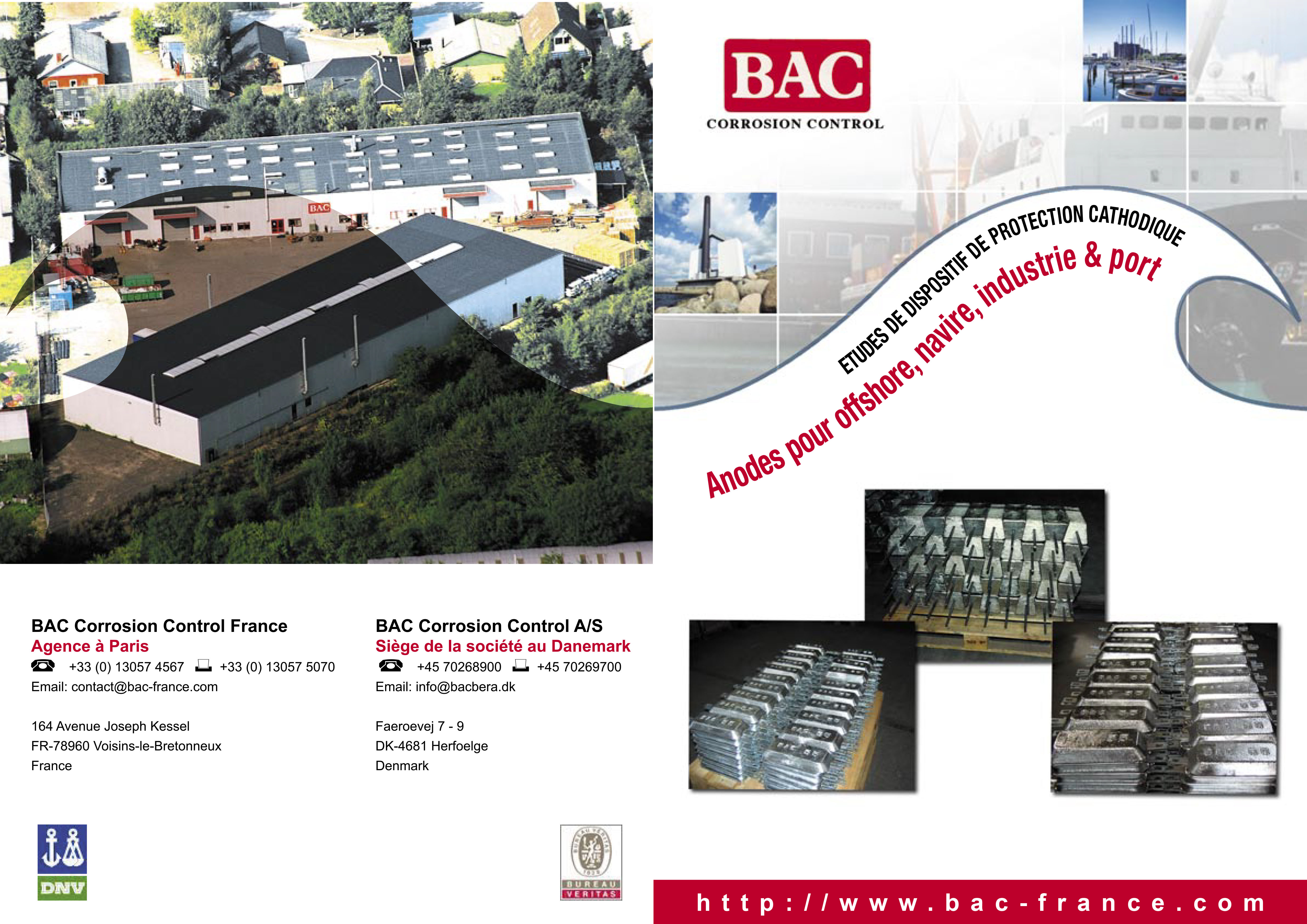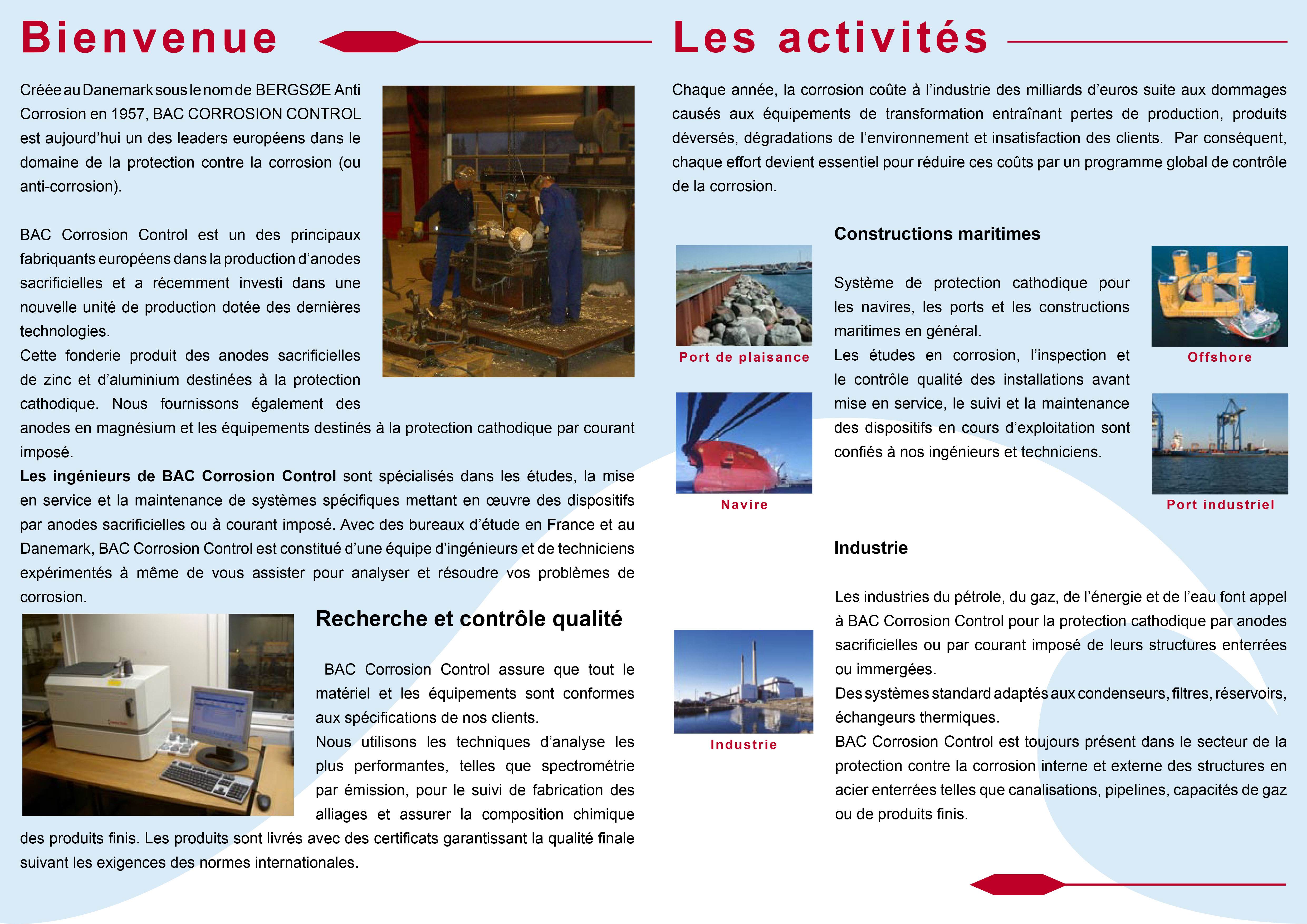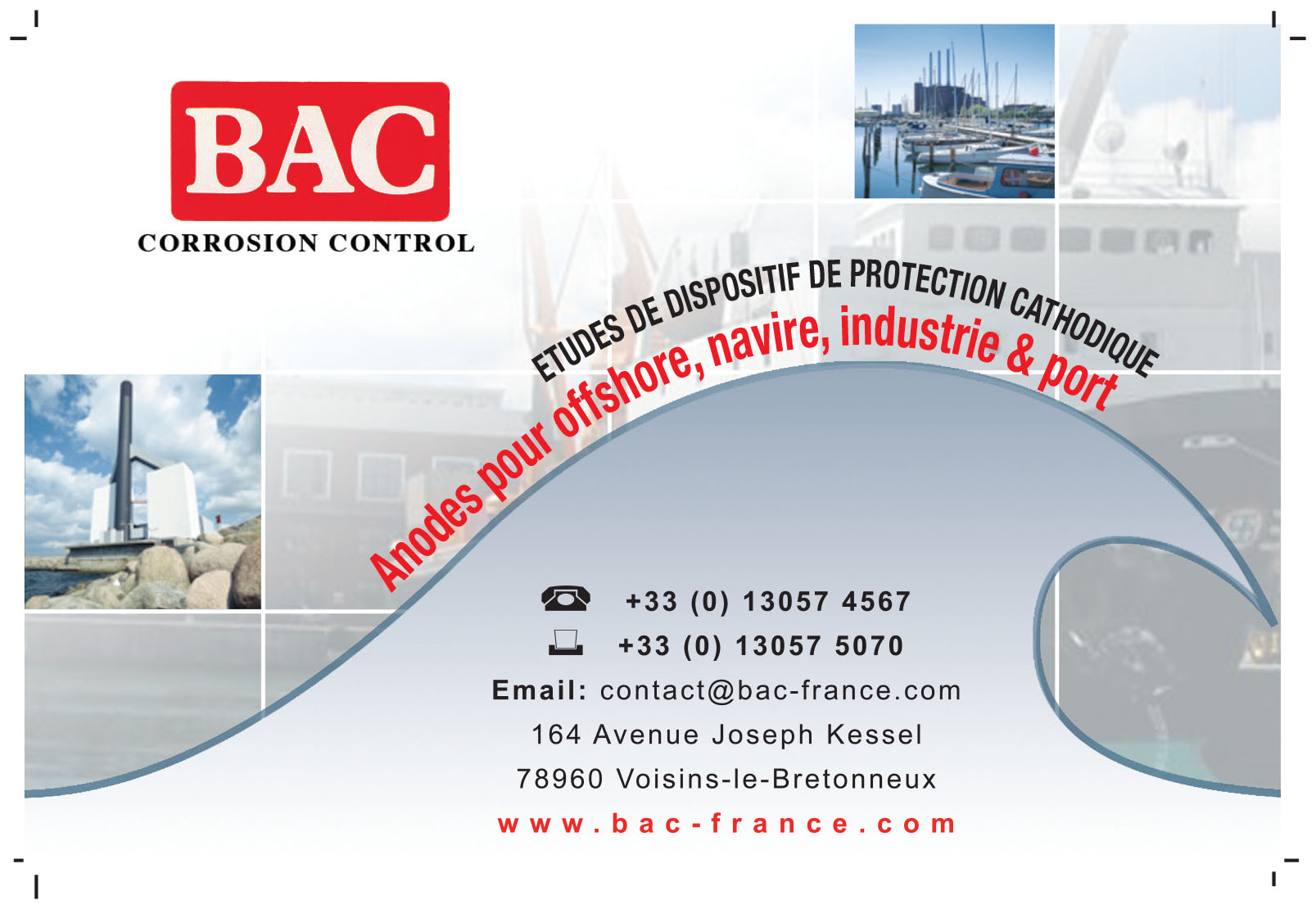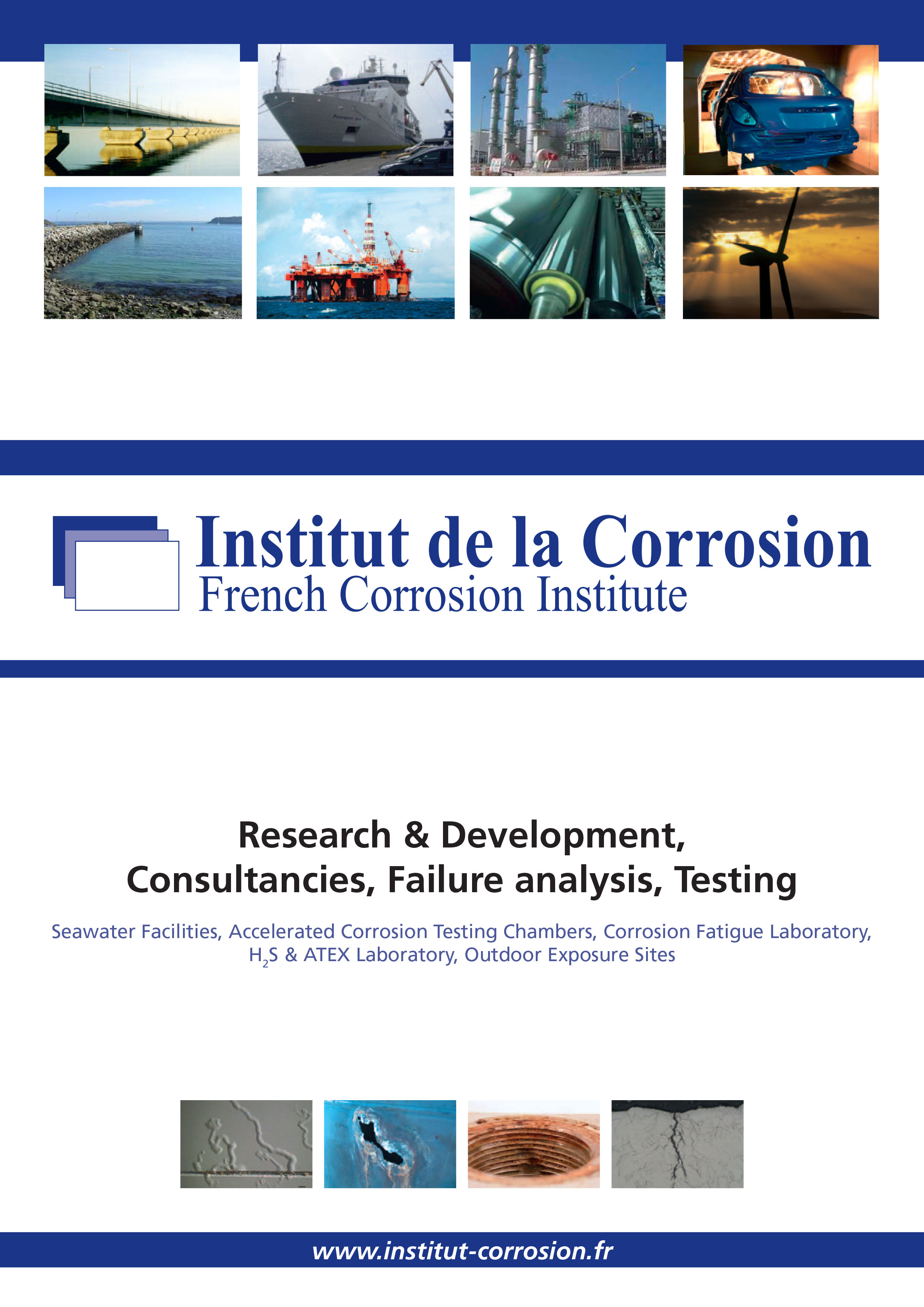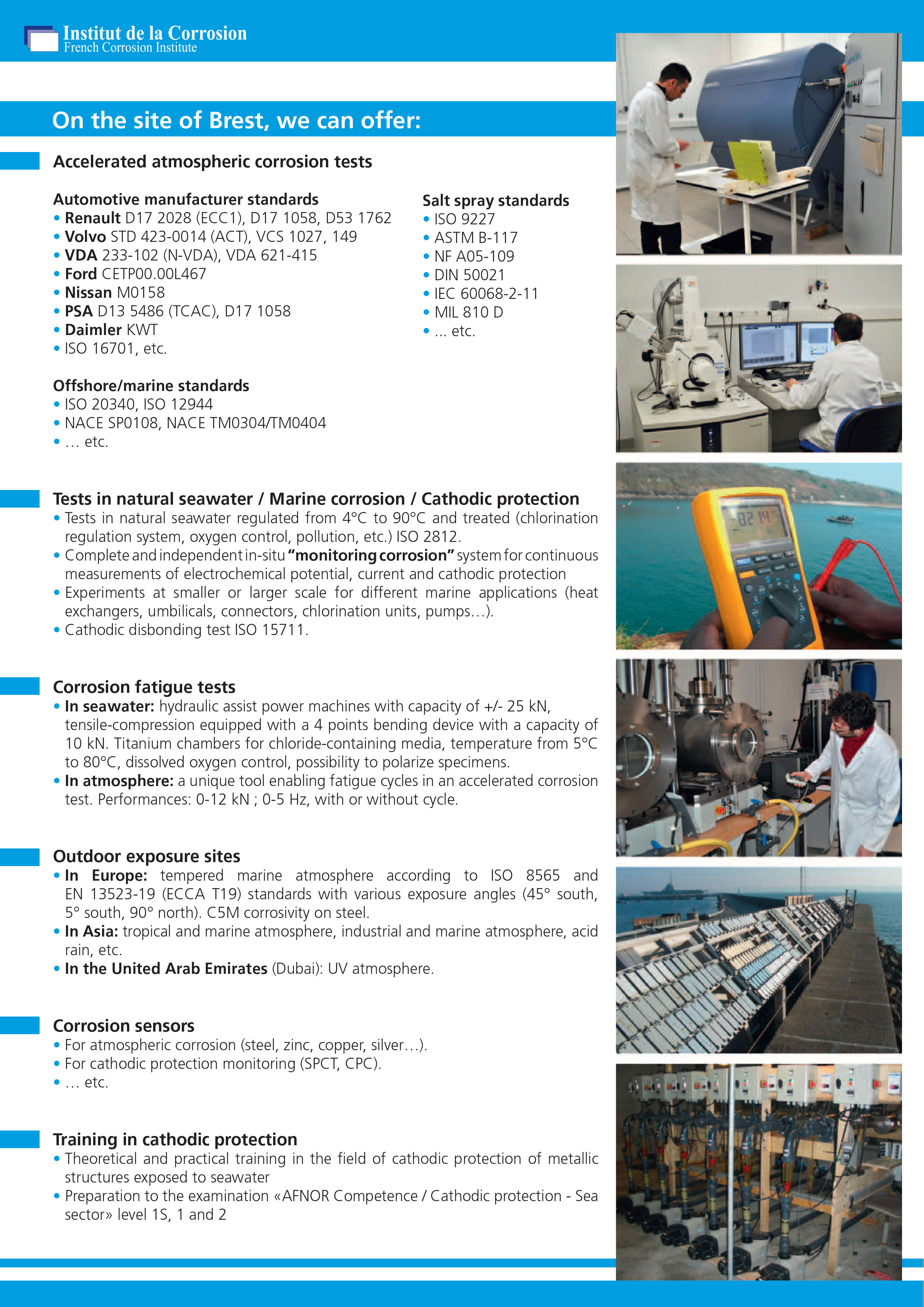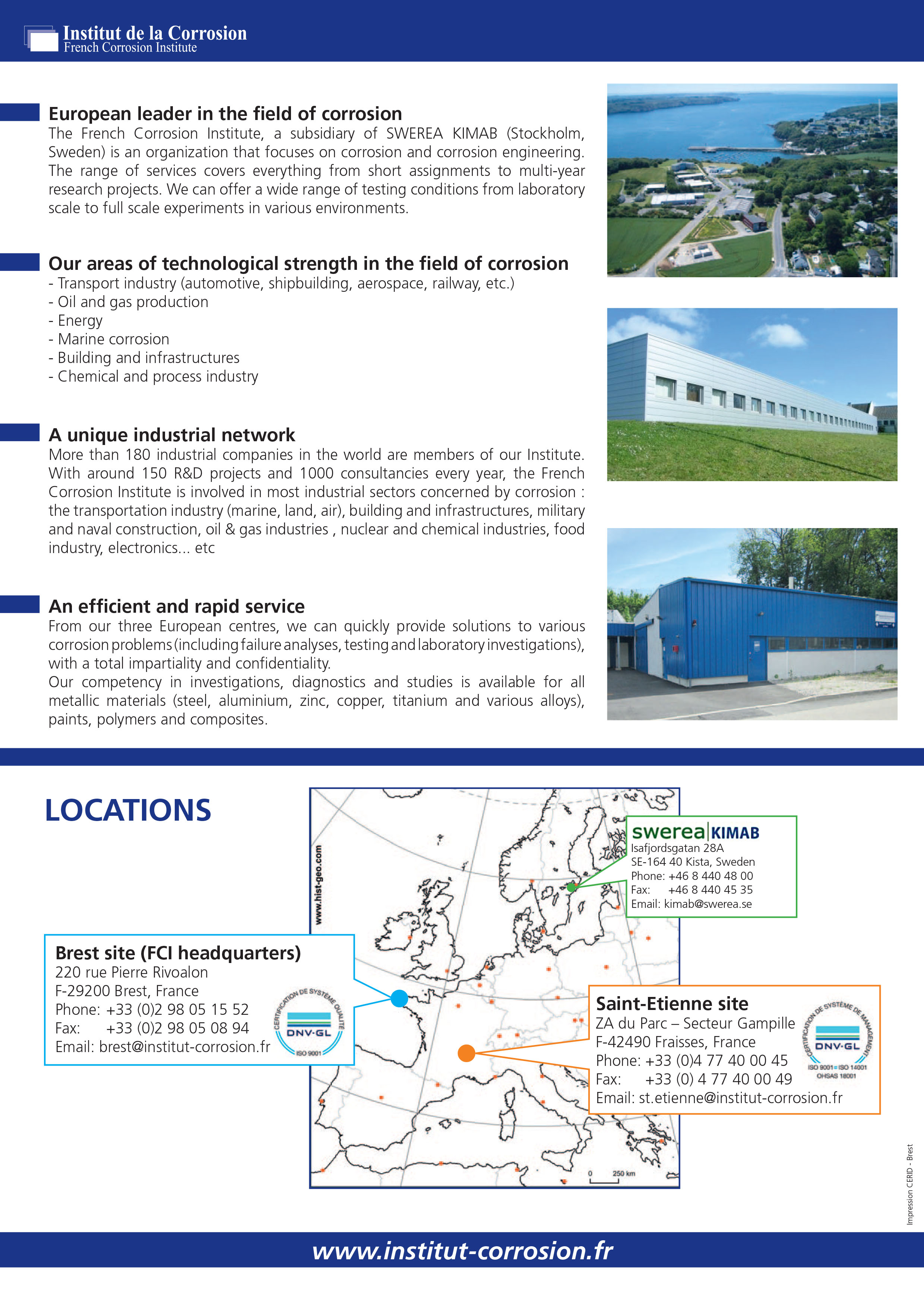The effect of the galvanic couples between metals has certainly been observed for a long time (maybe by the Romans). In Florence, in 1792, Giovanni Fabbroni was the first one to describe bi-metallic corrosion.
In 1802 Alessandro Volta described the principles of the effect of a continuous electric current on the oxidation of metals: “The oxidation strongly increases on the metal from which the current goes out to go in water or other oxidant liquids. The oxidation decreases or is completely eliminated on the metal in which the current goes in and on which hydrogen is released “.
The first application of cathodic protection by “galvanic system” using “sacrificial anodes” was done in sea water, an ideal environment, for the implementation of this technique because of its high conductivity and its strong homogeneity. In 1806, Sir Humphrey Davy advanced the idea of a favourable effect on the corrosion of copper in sea water in contact with zinc, tin or iron. Following an order of the Royal Navy in 1824, he established within two years the basic principles of cathodic protection in sea water. He attached four cast iron anodes, two to the stern and two to the bow, with a surface ratio of 1:80 of the surface of copper, on the SS Samarang, a wooden warship with a copper hull which showed signs of corrosion after being used for three years. So, we talk about “Electrochemical means”.

The installation of iron plates to protect copper sheath of boats with wooden hulls of the British Royal Navy was thus introduced. Thereafter, zinc replaced iron, ensuring a galvanic protection of steel. The real efficiency of this system was certainly low because of the level of purity of the used zinc at this time.
The law established by Faraday in 1829 to quantify electrolysis was a major progress in the explanation and the design of galvanic systems.
In 1865, Antoine Becquerel, studying the protection of boats with zinc, writes: ” another use could be done with some chance of success: It is about the protection of cast iron piping buried in wet grounds “.

 The first application of cathodic protection by impressed current was introduced to fight against galvanic corrosion in the condensers of boilers used for steam machines at the end of the 19th century. This system used some soft iron for the anodes and the current was provided by low voltage dynamos generating a 6 to 10 V direct current. This process, called “Cumberland Electrolytic System”, was introduced by Elliott Cumberland in Great Britain, the zinc galvanic anodes used then quickly became inefficient because of the deposits forming and it required frequent changes. This technique was applied for the protection of steam machines, particularly on the railway engines. It was used by the British Army during the First World War and on boats (maybe on the Titanic).
The first application of cathodic protection by impressed current was introduced to fight against galvanic corrosion in the condensers of boilers used for steam machines at the end of the 19th century. This system used some soft iron for the anodes and the current was provided by low voltage dynamos generating a 6 to 10 V direct current. This process, called “Cumberland Electrolytic System”, was introduced by Elliott Cumberland in Great Britain, the zinc galvanic anodes used then quickly became inefficient because of the deposits forming and it required frequent changes. This technique was applied for the protection of steam machines, particularly on the railway engines. It was used by the British Army during the First World War and on boats (maybe on the Titanic).
The first use of cathodic protection for the buried water, gas or petroleum products pipelines took place in the 1920s in the USA, with the use of windmills before the appearance of rectifiers. In the 1930s, Illinois Bell Telephone Co protected lead sheathed cables with CuO 2 rectifiers.
In the USSR, a first pilot unit for cathodic protection was installed on an oil pipeline close to Baku in 1931. Another one, coupled with a drainage, was tested in 1946 on a Baku-Batumi pipeline. But the first use on gas pipelines (Dachava-Kiev and Saratov-Moscow) was in the years 1949-1951.
In Western Europe, cathodic protection has been developed in addition to the “polarized drainage” of the stray currents set up against the fast attacks by corrosion of the ground pipes pulled along by the electrification of the networks with direct current. The regulation sometimes slowed down the implementation of these techniques, particularly in France. The decree of April 30, 1935 prohibited the electric connection between rails and metal masses in the ground (article 104) and the use of the earth as a part of an electrical distribution system (article 133).
In Belgium, Distrigaz studied this method (called ” électroprotection”) since 1930 and tried it out since 1934, mainly against “electrolytic” corrosion by stray currents, in addition to the polarized drainages. Cathodic protection by impressed current was introduced in France only in 1946 by the RAP for its South-west network (with the help of Distrigaz). At the same time, Gaz de France set up electrochemical prediction methods at the instigation of J Maurin. At the same time magnesium anodes were installed on part of the piping between Gennevilliers and Saint-Ouen.
Offshore, cathodic protection by galvanic anodes was initially used in the Lake Maracaibo (Venezuela). An application of the protection by impressed current on an underwater pipeline conveying water between Miami and Keywest (Fl.) is noticed in 1935. A broad application of cathodic protection was developed on the platforms in the Gulf of Mexico the end of the Forties, by the use of suspended magnesium anodes, frequently replaced.
The real industrial applications of cathodic protection were linked to the development of techniques during the Second World War: for example the first rectifiers with semiconductors and magnesium anodes.
The criterion -0.85 V / sat. Cu-CuSO4 set up by R. J. Kuhn in 1933 for the buried pipelines was theoretically interpreted at the same time by T.P. Hoar in 1937 and R.B. Mears and R.H.Brown in 1938. W J Schwerdtfeger confirmed this criterion thanks to tests in the grounds in 1951 and in sea water in 1958.
In 1952, Marcel Pourbaix and the Comité Technique Belge sur la protection cathodique (CT4) wrote: “Since 1933 cathodic protection installations of steel pipes buried in the ground were developed (mainly for the distribution of water, gas and oil). These installations are now perfectly efficient and can be easily controlled, thanks, in particular, to a better knowledge of the scientific bases of the electrochemical behaviour of iron and ordinary steels. Cathodic protection is destined for a great future in many other cases, and further scientific and technical studies about this subject are required…”.


